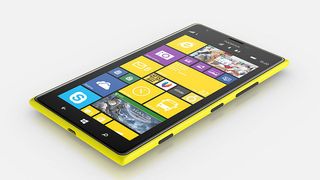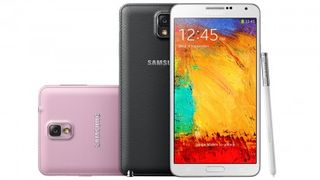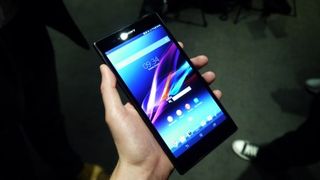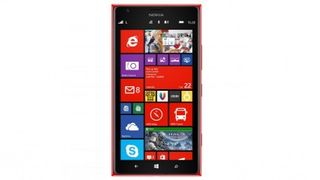Nokia Lumia 1520 vs Sony Xperia Z Ultra vs HTC One Max vs Samsung Galaxy Note 3
Battle of the phablets

Nokia is entering phablet territory for the first time with the Nokia Lumia 1520. On top of that it's also the company's first quad-core handset, so there's a lot to get excited about.
But it's not entering the market uncontested. The Samsung Galaxy Note 3 is a towering giant, the third in a line of enormously successful phablets, while Sony and HTC are both dipping their toes in the big screen waters with the Sony Xperia Z Ultra and the
.
Wondering how they all stack up? Well wonder no more because we've got you covered.
Screen
The key feature for all these handsets are their displays - their huge, massive, palm busting displays. All four fall into the horribly named "phablets" niche, so they all sport big screens - deal with it.
The Nokia Lumia 1520 has a 6-inch 1080p full HD display with a pixel density of 367ppi. It's an AMOLED ClearBlack screen, which ensures it has good contrast and is readable in bright sunlight.
Get daily insight, inspiration and deals in your inbox
Get the hottest deals available in your inbox plus news, reviews, opinion, analysis and more from the TechRadar team.

The Sony Xperia Z1 Ultra has a mammoth 1080 x 1920 6.4-inch display with a pixel density of 344 pixels per inch and it uses Triluminos technology to improve colour saturation levels.
The HTC One Max has a 1080 x 1920 5.9-inch display with a pixel density of 373 pixels per inch and the Samsung Galaxy Note 3 has a comparatively small 1080 x 1920 5.7-inch Super AMOLED display, but this means it can boast the best pixel density of 386 pixels per inch.
In other words all four handsets have decent, high definition screens, but the Sony Xperia Z Ultra is the biggest while the Samsung Galaxy Note 3 is the smallest and most defined.
Specs
All four handsets are top end devices and they have specs to match. Every single one of them has a quad-core processor on board but they're not all equal.
Both the Nokia Lumia 1520 and the Sony Xperia Z Ultra have 2.2GHz Qualcomm Snapdragon 800 processors, but the Samsung Galaxy Note 3 has a marginally more powerful 2.3 GHz Snapdragon 800 processor and the HTC One Max has a far less powerful 1.7 GHz Snapdragon 600 processor.

Each of the handsets has 2GB of RAM, except for the Samsung Galaxy Note 3 which once again leads the pack with 3GB of RAM.
The gist of that being that the Samsung Galaxy Note 3 is the most powerful of them on paper while the HTC One Max is the least powerful as it uses a slower processor than the others. The Nokia Lumia 1520 and Sony Xperia Z Ultra have exactly the same RAM, processor and speed.
Operating system
Both the Samsung Galaxy Note 3 and the HTC One Max are running the latest version of Android (Jelly Bean 4.3), while the Sony Xperia Z Ultra is stuck with Android 4.2. The Nokia Lumia 1520 is of course the odd one out here, being a Windows Phone 8 device.

We'd expect the Z Ultra to get an update to Android 4.3 in the near future, while it's worth noting that the Lumia 1520 has the latest version of Windows Phone 8 on board, with numerous upgrades, bug fixes and improvements.
This brings Windows Phone 8 closer to Android, but both platforms offer very different user experiences, with Android offering a wealth of apps and options and WP providing a more straight forward, easier interface.
Design and dimensions
The Nokia Lumia 1520 looks much the same as earlier Lumia handsets, with a colourful polycarbonate design. It's available in black, white, yellow and red and has dimensions of 152 x 81 x 8.7mm, so it's as large as you'd expect a phablet to be.
At 168g it's not super heavy though, coming in lighter than the 185g Nokia Lumia 920.
The Sony Xperia Z Ultra has a slightly more high end design than the Lumia 1520, opting for a shiny glass back. It's also water and dust proof. At 179.4 x 92.2 x 6.5mm it's long and wide but impressively slim, though at 212g you're likely to feel it in your pocket, if it even fits. It comes in black, white and purple.
James is a freelance phones, tablets and wearables writer and sub-editor at TechRadar. He has a love for everything ‘smart’, from watches to lights, and can often be found arguing with AI assistants or drowning in the latest apps. James also contributes to 3G.co.uk, 4G.co.uk and 5G.co.uk and has written for T3, Digital Camera World, Clarity Media and others, with work on the web, in print and on TV.
Most Popular


